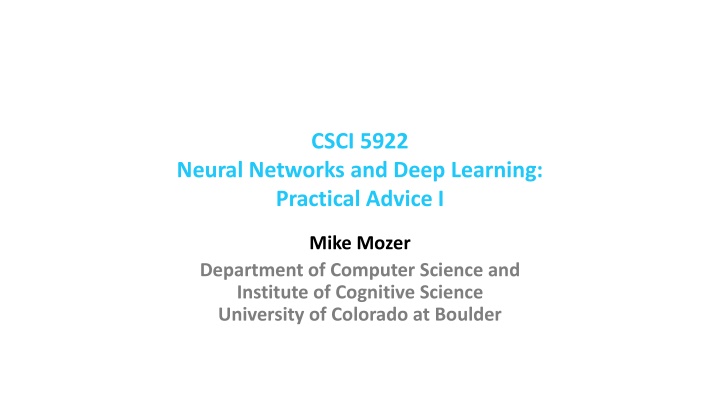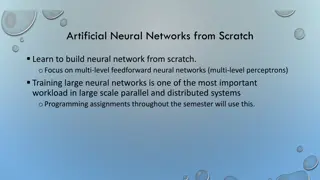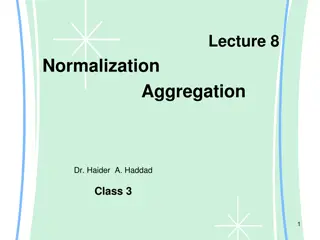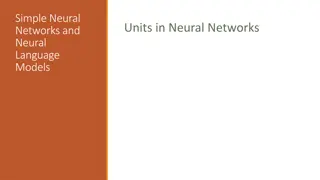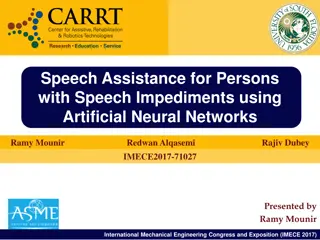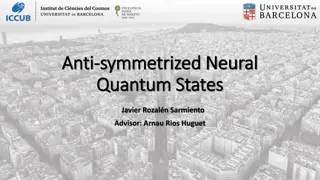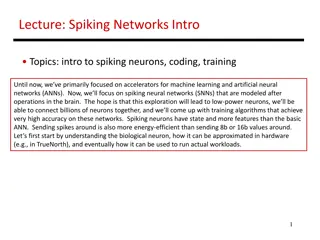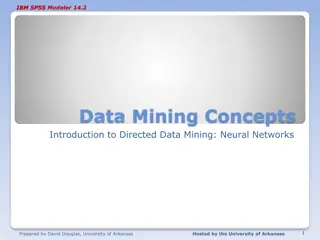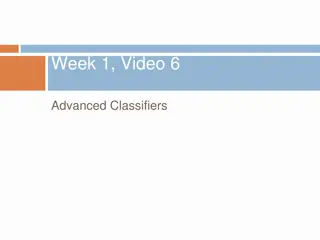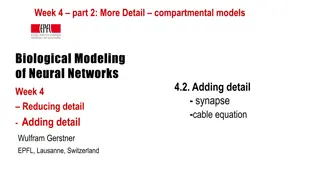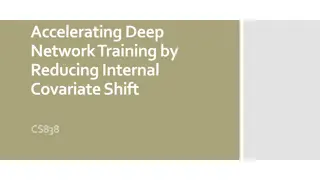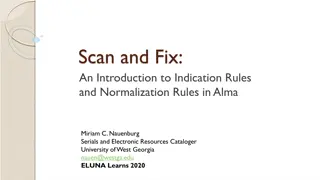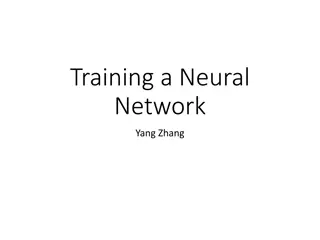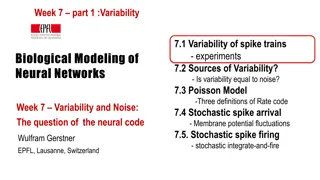Best Practices in Neural Network Initialization and Normalization
This resource provides practical advice on input normalization, weight initialization, Xavier normalization, and Glorot/Bengio normalization in neural networks. Tips include the importance of controlling the range of net inputs, setting initial weights appropriately, and understanding the rationale behind different normalization techniques.
Download Presentation

Please find below an Image/Link to download the presentation.
The content on the website is provided AS IS for your information and personal use only. It may not be sold, licensed, or shared on other websites without obtaining consent from the author.If you encounter any issues during the download, it is possible that the publisher has removed the file from their server.
You are allowed to download the files provided on this website for personal or commercial use, subject to the condition that they are used lawfully. All files are the property of their respective owners.
The content on the website is provided AS IS for your information and personal use only. It may not be sold, licensed, or shared on other websites without obtaining consent from the author.
E N D
Presentation Transcript
CSCI 5922 Neural Networks and Deep Learning: Practical Advice I Mike Mozer Department of Computer Science and Institute of Cognitive Science University of Colorado at Boulder
Input Normalization Reminder from past lecture True whether ??and ??are in same or different layers We want activations of two units in the input layer to have the same range We want activations of units in different layers to have the same range
Input Normalization Sensible to have inputs normalized to mean zero and standard deviation 1 ? ?? =? ? ? ?=? ??,?= ? ??,?: transformed input ? for training example ? ?=? ? ?= ? ? ?? ? ?=? ??,? To achieve this, compute mean ??and std dev ??for each input ? over training set ??,? ?? ?? ??,?= For test set, need to apply same transform Use ??and ??from training set They need to be stored along with network weights
Weight Initialization (For great detail, see section 8.4 of text) If initial weights are too large network has committed to a solution If initial weights are too small network has difficulty breaking symmetry Initial weights should be positive and negative to avoid saturation of activity
Xavier Normalization For each layer with ???inputs, the weight from input ? to output ? should be set as ?? ?in ???~???????? ?, with ? = ? being sensible ? ? Note: second term is variance, so standard deviation is ??? Rationale If ?? ?,+? , then with Xavier normalization, net input ??= ?????? ~ ????????(?,??) Independent of network size even when different layers have different fan-ins even when you change the number of hidden units in your network Why does controlling the range of net inputs matter? Applies equally well if ?? [ ?,+?]
Glorot/Bengio Normalization For each layer with ???inputs and ????outputs, the weight from input ? to output ? should be set as ?? ???~???????? ?, ?????+?in,+? ?????+?in or ???~??????? ? ????+?in Rationale Xavier scheme controls activation variance Glorot/Bengio aimed to control both activation variance and gradient variance Initialization scheme will depend on activation functions you re using Most schemes are focused on logistic, tanh, softmax functions
My Weight Initialization Draw all weights feeding into neuron j (including bias) via ???~ ???????? ?,? Normalize weights such that ???? = ? via ? ??? ??? ??? Works well for logistic units; to be determined for ReLU units
When To Stop Training 1. Train n epochs; lower learning rate; train m epochs bad idea: can t assume one-size-fits-all approach 2. Error-change criterion stop when error isn t dropping significantly bad idea: often plateaus in error even when weights are changing a lot compromise: criterion based on % drop over a window of, say, 10 epochs 1 epoch is too noisy absolute error criterion is too problem dependent
When To Stop Training 3. Weight-change criterion ? ?? ? ??< ? Compare weights at epochs ? ?? and ? and ask if ?????? Don t base on length of overall weight change vector Possibly express as a percentage of the weight Be cautious: small weight changes at critical points can result in rapid drop in error
When To Stop Training 4. Early stopping with a validation set Intuition Validation Set Hidden units all try to grab the biggest sources of error As training proceeds, they start to differentiate from one another Training Set Training Epoch Effective number of free parameters (model complexity) increases with training
Setting Learning Rates I Initial guess for learning rate If error doesn t drop consistently, lower initial learning rate and try again If error falls reliably but slowly, increase learning rate. Toward end of training Error will often jitter, at which point you can lower the learning rate down to 0 gradually to clean up weights Remember, plateaus in error often look like minima be patient have some idea a priori how well you expect your network to be doing, and print statistics during training that tell you how well it s doing plot epochwise error as a function of epoch, even if you re doing minibatches (ta- ya)2 (ta- t )2 NormalizedError =
Setting Learning Rates II Momentum Dwt+1=qDwt-(1-q)e E wt Adaptive and neuron-specific learning rates Observe error on epoch t-1 and epoch t If decreasing, then increase global learning rate, global, by an additive constant If increasing, decrease global learning rate by a multiplicative constant If fan-in of neuron j is fj, then ej= eglobal fj
Setting Learning Rates III Mike s hack Initialization epsilon = .01 inc = epsilon / 10 if (batch_mode_training) scale = .5 else scale = .9 Update if (current_epoch_error < previous_epoch_error) epsilon = epsilon + inc saved_weights = weights else epsilon = epsilon * scale inc = epsilon / 10 if (batch_mode_training) weights = saved_weights
Setting Learning Rates IV RMSprop see text ADAM see text Second-order methods Take a numerical optimization course Requires computation of Hessian
Unbalanced Data Sets Suppose we have many more + examples than . Should we rebalance the data set for training? Some say yes, but only if the ratio is extremely high subsample high frequency category replicate low frequency category or bump up learning rate / loss
